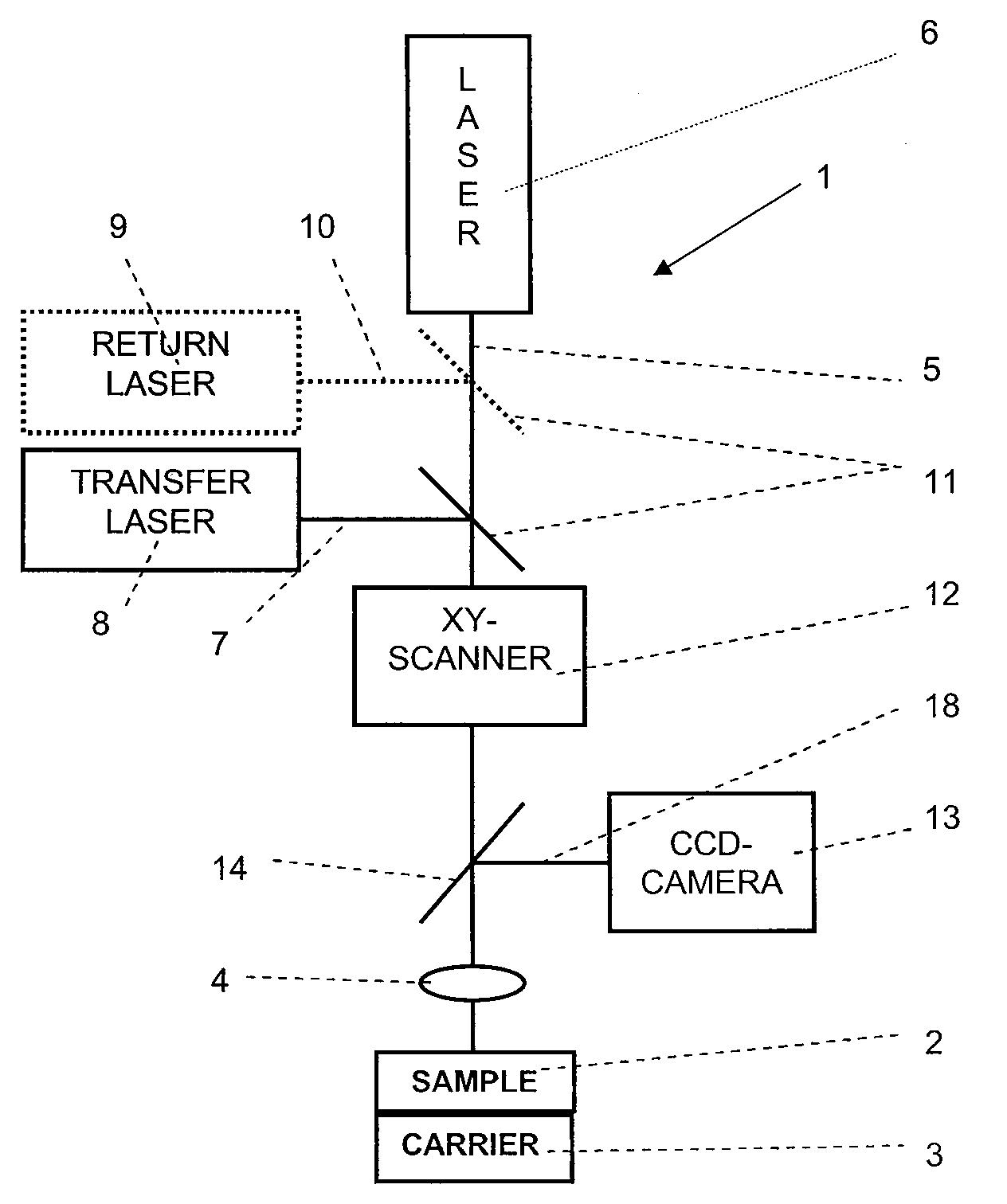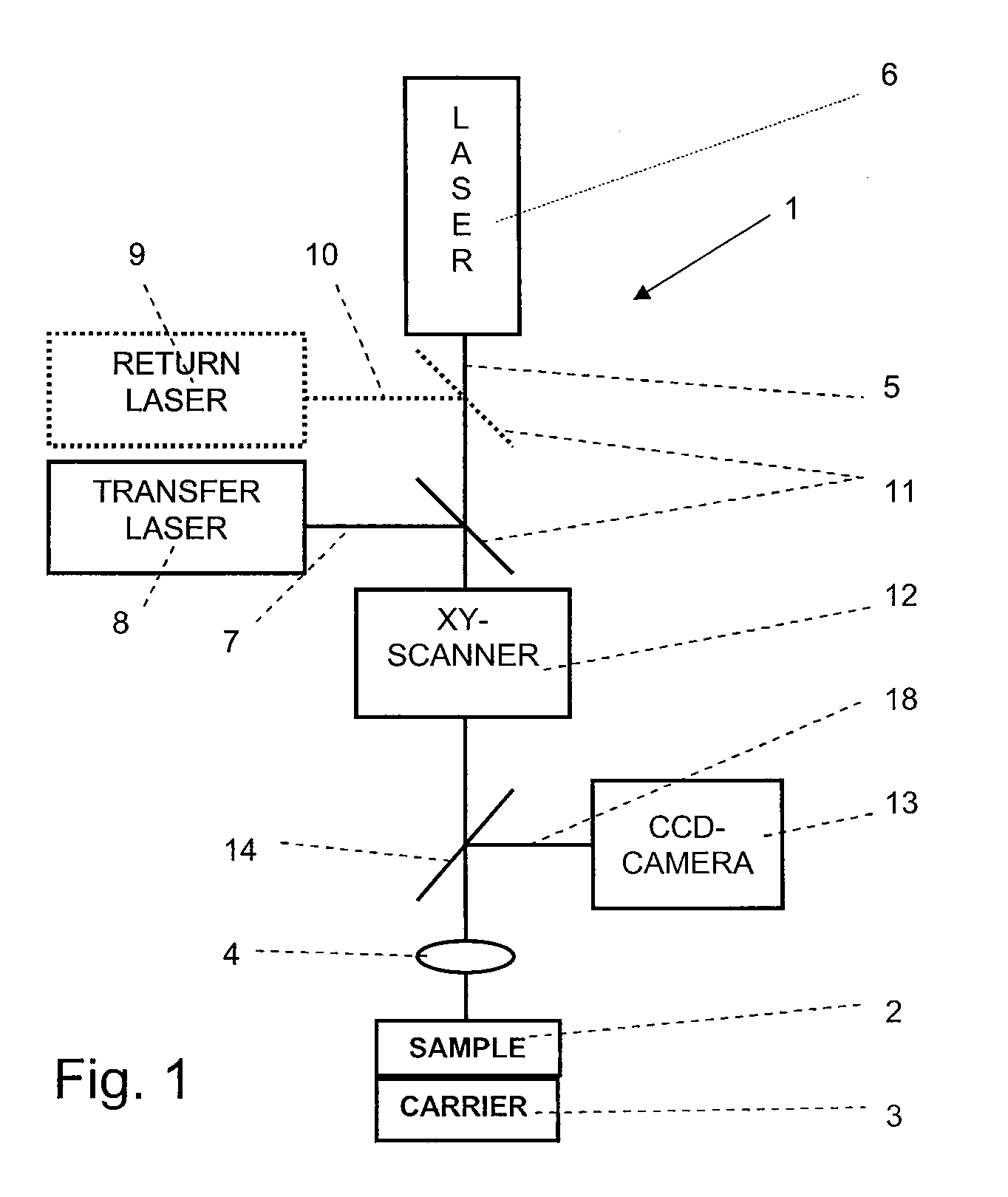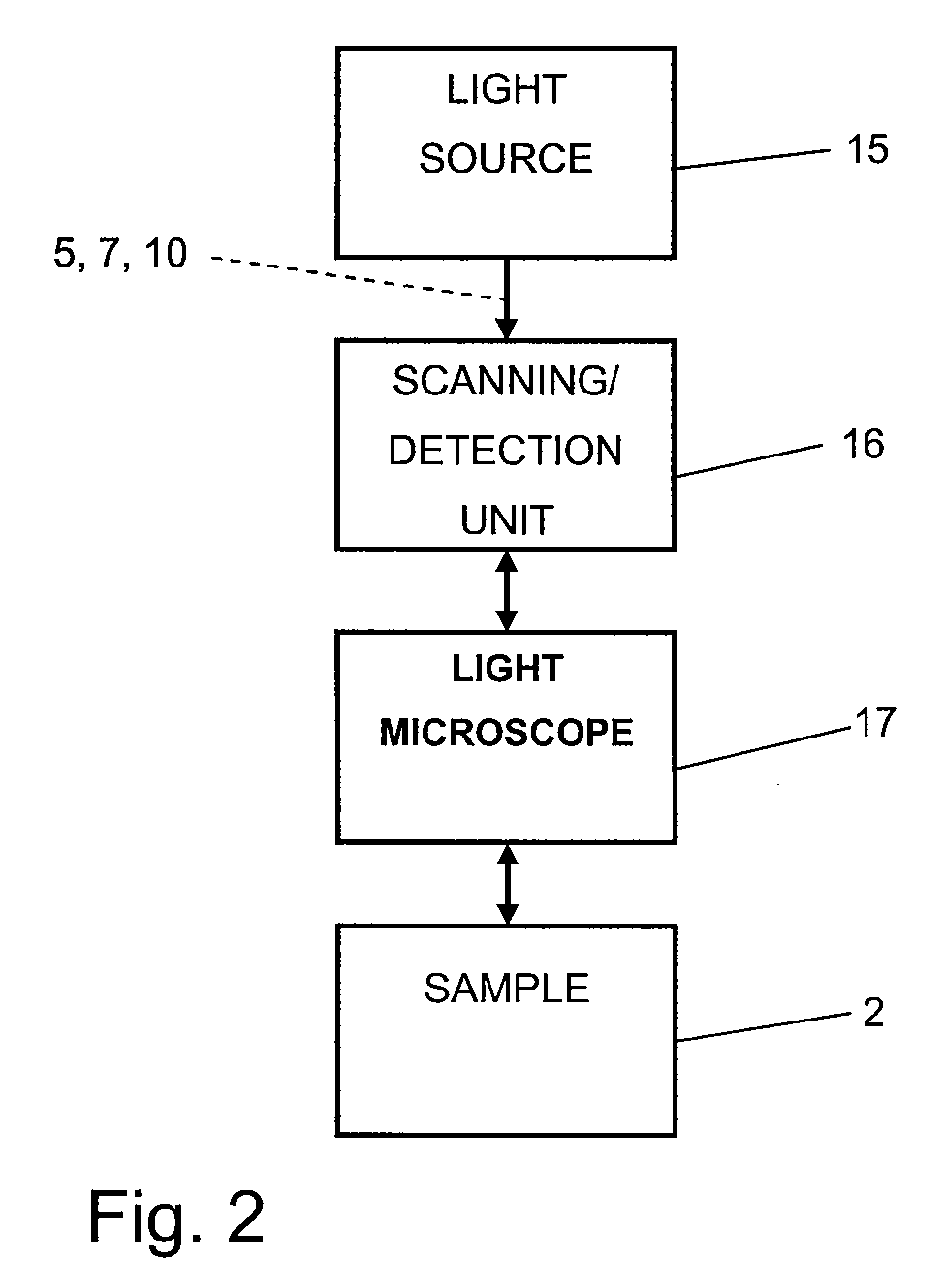Method of fluorescence-microscopically imaging a structure in a sample with high three-dimensional spatial resolution
a fluorescence-microscopic imaging and structure technology, applied in the field of three-dimensional spatial resolution fluorescence-microscopic imaging a structure in a sample, can solve the problem of not achieving any increase in spatial resolution, and achieve the effect of facilitating upgrading and facilitating the application of the new method
- Summary
- Abstract
- Description
- Claims
- Application Information
AI Technical Summary
Benefits of technology
Problems solved by technology
Method used
Image
Examples
Embodiment Construction
[0046]Referring now in greater detail to the drawings, the fluorescence microscope 1 depicted in FIG. 1 is used for three-dimensionally imaging a structure in a sample 2. The sample 2 is arranged on a sample carrier 3 suitable for displacing the sample 2 in the axial direction of an objective 4. The objective4 is used for focussing both an optical excitation signal 5 coming from an excitation laser 6 and an optical transfer signal 7 coming from a transfer laser 8 into a common focal spot within the sample 2. As the excitation signal 5 and the transfer signal 7 may have the same wavelength in the method of the present invention, the additional transfer laser 8 is optional. Further, a return laser 9 supplying an optional return signal 10 which is focussed in the pupil of the objective 4 may be provided. Dichroitic mirrors 11 are used to combine any optical signals 5, 7, and 10 onto one common optical axis. A xy-scanner laterally shifts the common optical axis of the optical signals 5,...
PUM
 Login to View More
Login to View More Abstract
Description
Claims
Application Information
 Login to View More
Login to View More - R&D
- Intellectual Property
- Life Sciences
- Materials
- Tech Scout
- Unparalleled Data Quality
- Higher Quality Content
- 60% Fewer Hallucinations
Browse by: Latest US Patents, China's latest patents, Technical Efficacy Thesaurus, Application Domain, Technology Topic, Popular Technical Reports.
© 2025 PatSnap. All rights reserved.Legal|Privacy policy|Modern Slavery Act Transparency Statement|Sitemap|About US| Contact US: help@patsnap.com



